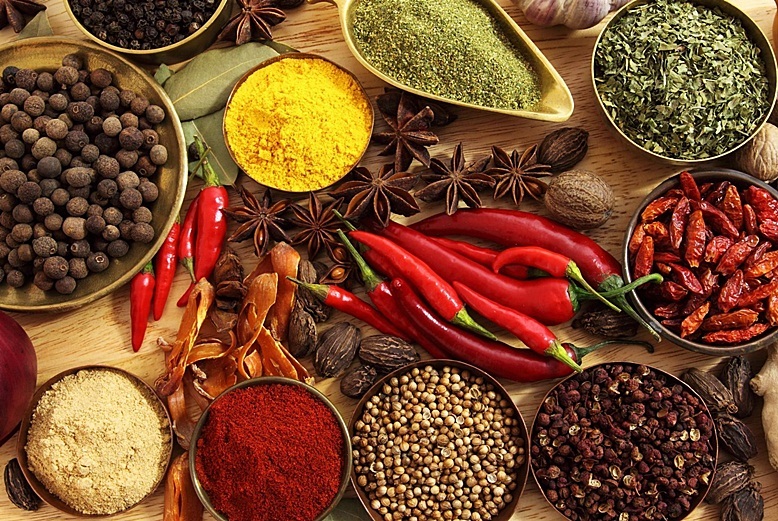Vietnam is the world’s leading spice exporter, with a turnover of about 1.5 billion USD per year. However, this industry is facing many difficulties and challenges, such as the destruction of pepper trees. There is no strategic direction for sustainable development at the national level for cinnamon, or new EU regulations on anti-deforestation…

Vietnam is the world leader in cinnamon exports and second in anise exports.
Ms. Hoang Thi Lien, President of the Vietnam Pepper and Spice Association (VPSA), said that Vietnam currently ranks third in global spice exports and dominates many important markets. Among them, Vietnam is the world leader in pepper production and export. Cinnamon exports also rank first in the world since 2022 and rank third in the world in anise exports.
STRENGTHS OF EXPORTING MANY TYPES OF SPICE PLANTS
According to Ms. Hoang Thi Lien, the global pepper market is valued at 5.43 billion USD/year, forecast to grow on average more than 20% in the period 2024-2032. Vietnam has been the world leader in pepper production and export for more than 20 years, accounting for 40% of the harvest and 60% of the global export market share.
In 2023, Vietnam exports 264,094 tons of pepper of all kinds, with a turnover of 906.5 million USD. Compared to 2022, export volume in 2023 will increase by 13.8%, however turnover will decrease by 8% due to reduced export prices.
In terms of market, the US is Vietnam’s largest pepper importer in 2023, accounting for 23.5% of the total export value of this product. Vietnam also holds the position of the largest pepper supplier to the US market. China is the second largest market, accounting for 22.8% of Vietnam’s total pepper export value. Next are the markets: India accounts for 4.9%; UAE accounted for 4.6%, down 24.7%; Philippines accounts for 3.0%…
“Since 2021, Vietnam has risen to become the world’s leading country in cinnamon exports. In 2023, Vietnam accounts for about 34.4% of the global cinnamon trade market share, with the main consuming markets being India, China, Bangladesh, America…”
Ms. Hoang Thi Lien, President of the Vietnam Pepper and Spice Association said.
Cinnamon and anise are also two main spices in Vietnam. The area planted with cinnamon in our country continues to increase rapidly. If in 2000 it was only 13,863 hectares, by 2023 it will reach 186,000 hectares. Currently, Vietnam has become the country with the largest cinnamon area in the world, with cinnamon bark output reaching 72,000 tons (2023).
According to VPSA, in 2023 Vietnam will export 89,383 tons of cinnamon, total export turnover reaching 260.9 million USD, an increase of 14.6% in volume and a decrease of 10.7% in value compared to 2022. India is The main export market of Vietnamese cinnamon, accounting for 42.6% reaching 38,038 tons, increased 14% over the previous year. Next is the US market accounting for 11.4% reaching 10,163 tons, an increase of 7%; Bangladesh accounted for 6.2% reaching 5,564 tons, an increase of 32.1%…
Regarding anise, Ms. Lien said that Vietnam’s anise production ranks second in the world (after China), with an area of 55,000 hectares, anise production reaching 22,000 tons in 2023. Anise is a valuable plant. High economic efficiency, producing products that have been widely used in many fields such as medicinal herbs, flavorings, cuisine and handicrafts… In 2023, Vietnam exported 16,136 tons of star anise, turnover reaching 83 million USD, India and China are the two main export markets of Vietnamese star anise, reaching 7,860 tons and 4,116 tons, respectively, accounting for 48.7% and 25.5% of the export market share.
In addition to pepper, cinnamon, and anise, Vietnam also has many other types of spice plants that are also growing. The whole country has about 68,100 hectares of chili cultivation, with an annual dried chili output of about 100,000 tons. In 2023, Vietnam will export 10,173 tons of chili, with a turnover of 20 million USD. China and Laos are the two main export markets of dried chili, reaching 8,651 tons and 1,108 tons, accounting for 85.0% and 10.9% of Vietnam’s total chili exports, respectively.
With ginger and turmeric, Vietnam will export 34,976 tons in 2023, with a turnover of 49.3 million USD. Compared to 2022, the export volume will increase more than twice. The main export markets for ginger and turmeric include China, accounting for 29.4%, reaching 10,271 tons, an increase of 437.2%; Bangladesh accounted for 18.8% reaching 6,585 tons, an increase of 100%; India accounted for 12.6% reaching 4,394 tons, an increase of 49.9%; Laos accounted for 8.4% reaching 2,927 tons, an increase of 2,401.7%; The US accounts for 4.3% reaching 1,498 tons, an increase of 33.0%… In addition, cardamom and nutmeg are included, with export volume of 3,551 tons, turnover reaching 27.4 million USD in 2023. .
CHALLENGES THAT MUST BE OVERCOMED
Although it is the world’s leading exporter of spices, this industry is also facing many difficulties and challenges. For the pepper industry, it is the destruction of pepper trees.
VPSA leaders also asked the Ministry of Agriculture and Rural Development to have appropriate solutions to ensure sustainability for Vietnamese pepper. For the cinnamon industry, Vietnam does not have a strategic direction for sustainable development at the national level; lack of mechanism to produce research to promptly respond to market requirements.
Source: https://vneconomy.vn/giu-vung-vi-the-gia-vi-viet-tren-thi-truong-the-gioi.htm







